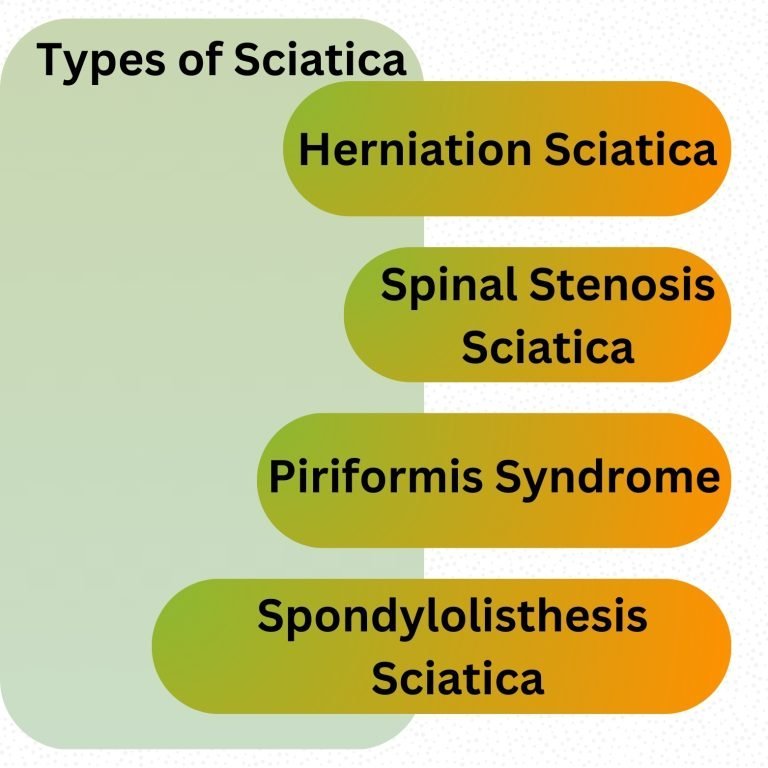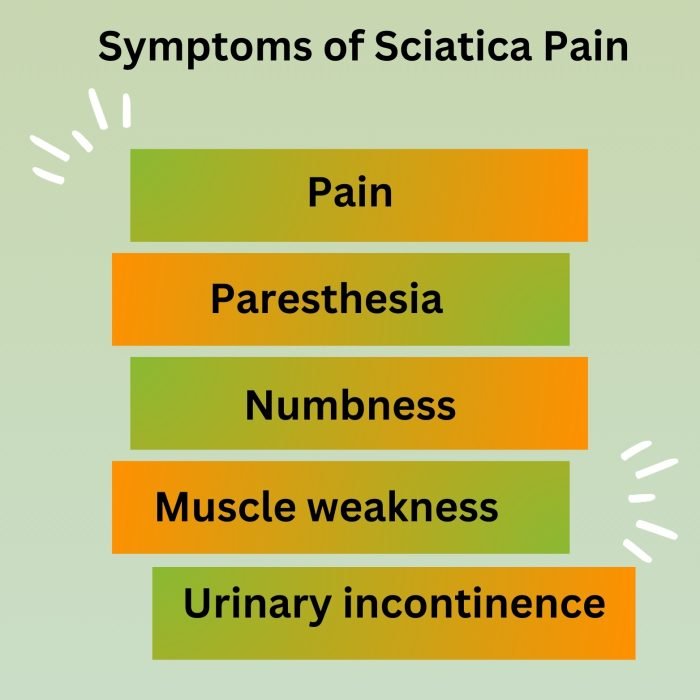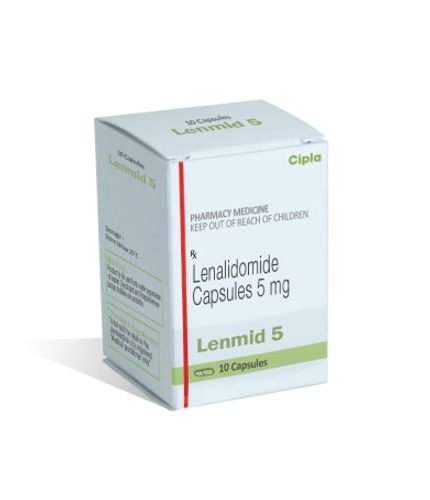Introduction:
This type of nerve discomfort affects the legs and lower back. It is caused by inflammation and swelling and manifests as sciatica nerve pinching and annoying pain.
This ailment is treatable at home, and patients usually recover with time, even though it is not serious. Of course, home treatments can support you.
In this post, we will learn more about the specifics of sciatica pain and find out how to cure it at home using some simple techniques.
As we previously said, this arises when the sciatica nerve is damaged, either by an injury or by other factors. This type of discomfort typically manifests as a tingling, acute pinching sensation in the thighs and lower back.
This mostly affects the butt and lower back, but it might also spread to your legs.
To have a deeper understanding of sciatica pain, let’s examine the human anatomy. This is the longest and thickest nerve in the human body, as you can see.
But keep in mind that this isn’t just one nerve. It is a group of nerves that emerges from the spinal cord. In cases of severe discomfort, individuals may have pain throughout their legs in addition to the lower back and hip area. Usually, the physicians would advise you to take medication to relieve such excruciating pain.
What Is Sciatica Pain?
This is sciatic nerve discomfort caused by an injury or inflammation. It might cause discomfort, but it can also cause tingling or numbness in your butt or back, which can spread down your leg.
Your body’s longest and thickest nerve is the sciatic nerve. Its width might reach two centimeters. It is more than one nerve, despite its name.
This is located on each side of your body. Each sciatic nerve passes through one side of your hip and buttock. Each of them descends the leg on the side of your body until it is just below your knee. Once there, they divide into more nerves that attach to more distant areas, such as your foot, toes, and lower leg.
If you have sciatica, you may feel mild to severe pain in any location where the sciatic nerve is connected to other nerves. You may have symptoms in your legs, hips, buttocks, or lower back. Certain symptoms could go as far down as your toes and feet, depending on which nerve or nerves are impacted.
The sciatic nerve passes through each leg from the lower back, passing via the hips and buttocks. This discomfort occurs practically anywhere along the sciatic nerve’s route. More often, it will go from the lower back to the buttocks, as well as the back of the leg and thigh. The severity of this discomfort might range from a little ache to a searing, scorching feeling.
This occurs when a herniated disc or an enlarged bone presses against a nerve segment, causing inflammation and numbness in the afflicted limb. Coughing, sneezing, or prolonged sitting can exacerbate the pain, which may seem like an electric shock or jolt. This usually affects just one side of the body. Some persons have weakness, tingling, or numbness in their leg or foot muscles. One leg can be numb and the other hurt.
Even though this can cause excruciating pain, conservative therapy usually resolves the issue in three months. Conservative therapy is the term used to describe non-invasive pain management techniques that you may use at home.
To What Extent Does Sciatica Persist?
This often lasts no more than 6 weeks. It’s wise to get help from a back pain treatment professional if your discomfort persists for longer than this. They can help you identify the cause of your persistent sciatica and choose the best course of action for therapy.
Many patients find their sciatica significantly improved or relieved with the right treatment, including physical therapy, medication, or even surgery. Others, however, may continue to experience symptoms after therapy. In situations involving age-related changes, spinal deformities, or nerve injury, this is particularly true.
Age, underlying spinal disorders, obesity, a sedentary lifestyle, and poor posture are some of the factors that might prolong sciatica.
The prognosis for sciatica often relies on the underlying reason, the patient’s general health, and how well the therapies work. For a customized treatment plan and to rule out more serious illnesses, it’s critical to consult a doctor if sciatica lasts for a long time.
Types of Sciatica

- Herniation Sciatica
Vertebrae are separate bones that make up the spine. The intervertebral discs, which lie between these vertebrae, provide flexibility to the spine and serve as shock absorbers.
The soft inner disc material pulls out via a rip or weakness in the outer disc wall, resulting in a herniated disc.
This might result from this growth pressing against the sciatic nerve and other surrounding nerve roots.
When a herniated disc is severe, a person may also have trouble regulating their bowels or bladder, which calls for emergency care.
The majority of patients with a herniated disc who receive non-surgical therapy see a notable improvement in their symptoms in a matter of weeks to months. The secret to rehabilitation is to avoid activities that exacerbate the discomfort, maintain good posture, and receive regular physical treatment.
- Spinal Stenosis Sciatica
Stenosis of the spine when the spinal canal narrows and presses on the sciatic nerve, and sciatica develops. Pain, numbness, and other symptoms along the sciatic nerve route are caused by this constriction, which frequently occurs as a result of aging or other spinal disorders.
Severe limb paralysis, sexual dysfunction, and loss of bladder or bowel control can result from spinal cord compression. This has to be treated right away since it’s a medical emergency.
The sciatic nerve may be compressed by the spinal canal narrowing, resulting in lower back and leg discomfort, numbness, and weakness. Even though symptoms could get worse with time, conservative measures including medicine, physical therapy, and lifestyle modifications frequently work. More serious instances may require surgery to ease nerve compression and enhance quality of life.
- Piriformis Syndrome
A disorder known as Piriformis Syndrome occurs when the buttocks’ piriformis muscle irritates or compresses the sciatic nerve, causing tingling, numbness, and discomfort along the nerve’s route. It can be difficult to identify since it might mirror symptoms of other back or leg problems. This disorder is one of the causes of sciatica.
Sciatic nerve compression due to piriformis muscle spasms, tightening, or inflammation is known as piriformis syndrome. Along the nerve’s route, this results in sciatica-like sensations including pain, tingling, and numbness.
To relieve pressure on the sciatic nerve, the surgeon may extend or release the piriformis muscle. Usually, this is the final option left after all other therapies have been exhausted. Depending on how severe the ailment is and how well the patient responds to therapy, it might take weeks or months for the symptoms to completely go away.
- Spondylolisthesis Sciatica
The spondylolisthesis When one vertebra in the spine slides forward over the one under it, the sciatic nerve is compressed or irritated, leading to sciatica. Sciatica, a disorder when the sciatic nerve is misaligned, can cause pain, numbness, tingling, and weakness.
The first line of treatment for sciatica and spondylolisthesis is usually conservative. Surgical methods could be taken into consideration if they fail or if symptoms are severe. To increase flexibility, lessen discomfort, and strengthen the muscles supporting the spine, a physical therapist can create an exercise regimen. Posture correction and core strengthening may be the main focus.
For those with mild to severe spondylolisthesis, conservative therapy usually provides positive outcomes. Physical therapy, medication, and lifestyle changes can all help reduce pain and increase mobility.
Recovery from surgery may be prolonged. Following surgery, the majority of patients have considerable relief, however, it may take several months to fully recover.
Is There A Lasting Solution For Sciatica?
Indeed, this can be permanently cured. Although those who have recently experienced sciatica are more prone to experience this, long-term symptoms do not always preclude it.
Even if they don’t seek therapy, some people who have sciatica only ever suffer flare-ups once. Whether decompression surgery, steroid injections, or at-home exercises, this is a crucial component of healing for others.
Depending on the underlying cause of sciatica and how well a patient responds to therapy, there may be no long-term remedy. There isn’t generally a single, long-term treatment for sciatica, even though it may frequently be properly treated. However, with the correct strategy, many patients may avoid reoccurring bouts and see notable symptom improvement.
Injections, physical therapy, and pain management are examples of non-surgical procedures that help control symptoms and offer long-term relief.
While epidural steroid injections may not address the underlying source of pain, they can help decrease inflammation over the long run. Usually, they are used for flare-ups or when no other treatment has been effective.
Although a long-term cure for sciatica mostly depends on its underlying cause, many patients find that a combination of therapies provides them with long-term comfort. While physical therapy, exercise, medication, and lifestyle modifications can provide long-term relief for some, surgery may be the only option for others. The likelihood of future flare-ups can be decreased by maintaining spinal health via regular exercise, right posture, and ergonomics. Prevention is often the key.
Easy Stretches for Sciatic Pain Relief
Your muscles will remain active and compression or pinching will be lessened with gentle stretches. Stretching exercises for the back muscles and spinal cord can quickly alleviate lower back discomfort in the lumbar spine.
You might not be flexible enough for all of these exercises just yet, so go at your speed and make adjustments as needed. These stretches come with images and directions that you may follow.
- In the pigeon position, reclining
- Pigeon stance when sitting
- The forward pigeon pose
- Knee against the other shoulder
- Stretching the spine when seated
- Stretching the hamstrings while standing
- A simple sitting stretch
- Stretching the piriformis standing
- Groin muscle stretch
- Scissor stretch
Symptoms of Sciatica Pain

- Pain
Particularly in cases like sciatica, pain can be extremely incapacitating and unpleasant. To be more precise, this might vary from little discomfort to intense agony that shoots down the leg. Numerous underlying reasons, like inflammation, muscular strain, or nerve compression, can contribute to it, and it usually gets worse with movement or extended sitting.
It might feel like the nerve is on fire when sciatica pain is characterized as a burning sensation, particularly in the leg or lower back. Some people may also have discomfort, numbness in the leg or foot, and more extreme situations, muscular weakness that impairs movement.
Frustration, anxiety, or sadness can result from chronic pain, particularly if it lasts for a long time. People who have chronic pain often bear this emotional burden. Applying cold or heat to the afflicted region can help ease pain, relax muscles, and reduce inflammation. Cold treatment helps lower edema, whereas heat is frequently used to relax tense muscles.
- Paresthesia
The term “paresthesia” describes anomalous skin sensations, which are frequently characterized as tingling, numbness, prickling, or a “pins and needles” sensation. The hands, feet, arms, or legs are where it is most frequently felt, yet it can happen elsewhere throughout the body. Usually transient, paresthesia can occasionally develop into a chronic illness or indicate an underlying medical issue.
Uncomfortable sitting or sleeping positions, including crossing your legs or putting your arm under your head, might momentarily compress a nerve, causing a tingling or “pins and needles” feeling. The feeling normally goes away as you shift positions.
A stroke warning symptom may occasionally be paresthesia on one side of the body. Seeking immediate medical assistance is crucial if the feeling occurs quickly and is accompanied by other symptoms.
A variety of disorders can induce paresthesia, a frequent symptom that can vary from short-term problems like bad posture or pressure on a nerve to long-term illnesses like multiple sclerosis or neuropathy. A medical assessment may be necessary to identify and treat the underlying cause of chronic or severe paresthesia, even though the majority of instances are benign and go away on their own.
- Numbness
When a particular portion of the body loses or becomes less sensitive, it is referred to as numbness. Though it is most frequently felt in the hands, feet, fingers, or toes, it can affect any region of the body and last either momentarily or permanently. Other sensations like tingling, weakness, or pain may accompany numbness, which can be brought on by several illnesses ranging from little pressure on a nerve to more severe neurological or systemic problems.
Chronic numbness is frequently caused by peripheral neuropathy or damage to the nerves. Conditions including diabetes, alcoholism, vitamin deficiencies, and autoimmune illnesses are frequently linked to it.
One-sided numbness may indicate a stroke, particularly if it is accompanied by other symptoms including weakness, disorientation, or trouble speaking. An emergency occurs when numbness occurs abruptly and is accompanied by other neurological symptoms.
- Muscle weakness
A decrease in the strength or capacity of a muscle or set of muscles to contract and generate movement is referred to as muscular weakness. It can impact every muscle in the body and can range from slight exhaustion or trouble with certain tasks to extreme weakness that makes it hard to carry out even simple tasks.
Muscle damage from dehydration or an imbalance in electrolytes such as calcium, potassium, and sodium can cause weakness, cramping, or exhaustion. The immune system of the body assaults the nerve-muscle connection in this chronic autoimmune disease, causing weakness, especially in the muscles of the face, eyes, and throat.
- Urinary incontinence
Urine leaking that occurs without conscious control is known as urinary incontinence. This ailment, which can vary from modest leakage to total lack of bladder control, is widespread and frequently humiliating. It can afflict anybody, although it is more common in women, elderly persons, and people with certain medical disorders.
The most prevalent kind of incontinence, particularly in women, is caused by pressure on the bladder from physical activity or motions like lifting, laughing, sneezing, or coughing.
Pee leakage results from weakening or injury to the sphincter, which regulates the discharge of pee, or the pelvic floor muscles.
Because they can weaken the pelvic floor muscles, pregnancy, childbirth, age, obesity, and menopause are typical contributing factors. Urge incontinence and frequent desires to pee are signs of infections that irritate the bladder.
Is It Possible for Sciatica Pain to Cause Serious Health Issues?
In most cases, this is not a serious ailment. It usually doesn’t result in any serious or serious health issues. However, if you have chronic sciatica pain and don’t get the proper care, it might occasionally lead to issues.
In the long term, experiencing excruciating pain might result in tingling and a persistent numbness in the hip or lower back. In addition, it can permanently harm your nerves, which would make it impossible for you to move your legs with coordination.
It is true that although this is usually not fatal if left untreated or if the underlying reason is severe, it can create major health problems. A herniated disc, spinal stenosis, or spondylolisthesis are common causes of this ailment, which indicates an underlying sciatic nerve issue. Even while conservative measures like rest, physical therapy, and pain management help in many instances, severe sciatica can cause long-term problems if left untreated.
A person’s capacity to move normally may be impacted over time if sciatica continues to produce pain and weakness. As a result, one may become less independent and have trouble performing everyday tasks like walking, climbing stairs, or getting out of a chair. Particularly in elderly persons, this may raise the risk of falls and result in more injuries.
Why Does Sciatica Occur?
The sciatic nerve can be affected by any of the following conditions. Any of the five spinal nerves that bundle to create the sciatic nerve may also be affected by certain disorders.
- Herniated disks
- Degenerative disease
- Spinal stenosis
- Foraminal stenosis
- Spondylolisthesis
- Osteoarthritis
- Injuries
- Pregnancy
- Conus medullas syndrome
- Cauda equine syndrome
What Are Sciatica Pain Complications?
Most persons with sciatica get well completely. However, persistent discomfort that lasts for a long time might be a consequence of sciatica.
If a nerve is severely damaged, it may result in long-term muscular weakness, such as “drop foot.” When nerve damage occurs, your foot becomes numb, making it difficult or impossible to walk normally.
In addition, this may result in irreversible nerve injury, which would leave the afflicted legs feeling devoid.
Home Sciatica Pain Treatment
It is possible to treat many minor instances of sciatica at home. These home remedies might help with even more serious illnesses that require medical attention.
- Rest
For sciatica pain, rest is essential, but to guarantee a thorough recovery, it’s also critical to balance it with other therapies and activities. Although bed rest might assist with acute discomfort, prolonged or excessive bed rest can exacerbate the issue over time.
Taking a little vacation from heavy lifting or physical activities can help the body heal from sciatica caused by a herniated disc, a strained muscle, or other injuries. This will also help to prevent the condition from getting worse. Rest helps prevent undue tension in the afflicted region and minimize inflammation.
Rest facilitates the healing of tissues and the reduction of inflammation by limiting spinal movement. When inflammation is the primary cause of pain during flare-ups, this is very beneficial.
- Ice and Heat
A popular and successful method for treating sciatica pain is to apply heat and ice, which can aid in pain relief, inflammation reduction, and healing. Nevertheless, each technique has a distinct function, and understanding when and how long to apply heat or ice can significantly impact your course of treatment.
Heat is more helpful for chronic sciatica pain, especially if you have stiffness, muscular spasms, or pain from chronic nerve irritation. It can enhance local blood circulation and ease tense muscles.
Heat and cold treatments can both be quite successful in treating sciatica pain, but they have different functions. The greatest way to reduce inflammation and numb discomfort is with ice, especially in the early stages or after an activity. Particularly for persistent sciatica pain, heat can reduce muscular tension, increase blood flow, and offer long-term relief.
- Physical Therapy
For sciatica, physical therapy (PT) is one of the most popular and successful therapies. The condition’s underlying causes, such as spinal problems, bad posture, or muscular imbalances, are addressed. PT can be very helpful for lowering pain, increasing range of motion, and averting flare-ups in the future.
The cause of this may include weak muscles, particularly in the hips, lower back, and core. By strengthening these muscles, physical therapists can lessen the strain on the sciatic nerve and support the spine.
Physical therapy methods including manual treatment, heat/ice therapy, and targeted exercises can help you go back to your regular activities more quickly by reducing pain and inflammation.
Physical therapy aims to avoid sciatica attacks by teaching appropriate lifting techniques, posture, and strength and flexibility-maintenance activities once the pain has been managed.
- Prescription Medications
For sciatica, prescription drugs are usually utilized when over-the-counter remedies are ineffective or when the pain is severe and ongoing. Doctors may give a range of drugs to assist manage pain, decrease inflammation, and improve mobility, depending on the degree of symptoms and the underlying cause of sciatica.
The way that opioids reduce the experience of pain is by blocking the brain’s pain receptors. They have a significant potential for abuse, though, and can result in nausea, constipation, and drowsiness.
When other therapies for sciatica have failed, prescription drugs may play a significant role in controlling the condition. The degree of pain, the underlying reason for sciatica, and the patient’s general health will all influence the kind of treatment that is recommended. Since some of these drugs can have serious negative effects, especially if used for an extended period, it’s crucial to use them under a doctor’s supervision.
- Over-the-Counter Drug
For mild to severe sciatica pain, over-the-counter (OTC) medicines are frequently the first line of therapy. Without a prescription, they are usually readily available and can aid in the management of pain and inflammation.
Commonly used to treat pain and inflammation, NSAIDs can play a significant role in sciatica. They function by inhibiting the enzymes that generate prostaglandins, which are the substances that cause inflammation and discomfort.
Without the negative effects of ingesting drugs, topical therapies can help relieve pain and inflammation in the afflicted part of the body by applying pharmaceuticals directly to the skin.
The initial line of treatment for people with mild to severe sciatica pain may be over-the-counter medicines. Your symptoms and preferences will determine whether you use topical creams for focused therapy, Epsom salt baths to assist relax muscles, or NSAIDs or acetaminophen for pain relief.
Any over-the-counter drug should be used with caution if used for an extended period, especially NSAIDs and acetaminophen, since they may cause adverse effects such as liver damage or stomach discomfort. Carefully observe dosage directions at all times, and see a doctor if you have any adverse effects or if your symptoms don’t go away.
- Lifestyle Modifications
When it comes to controlling sciatica pain and lowering the chance of flare-ups, lifestyle changes might be quite important. Adopting healthful practices can help reduce pain, enhance spine health generally, and stop sciatica occurrences in the future.
Getting regular exercise is one of the most crucial things you can do to avoid and treat sciatica. By improving posture, increasing flexibility, and strengthening the muscles supporting the spine, exercise can lessen the strain on the sciatic nerve.
Use an ergonomic chair if your profession needs you to sit for long periods, and take a 30-minute break to stand and stretch.
When standing for extended periods, consider shifting your weight from one leg to the other and alternating the strain on your legs with a footrest or stool.
Making changes to your lifestyle can help you manage sciatica much better, lessen discomfort, and avoid flare-ups in the future. This may be controlled by regular exercise, keeping a healthy weight, adopting healthy habits including stress management, hydration, and safe lifting practices, as well as by practicing excellent posture.
What Are The Possible Causes Of Sciatica Injuries?
This happens when there is damage to your body’s sciatic nerve. Any of the nerves that bundle together to form the sciatic nerve group might potentially produce comparable symptoms. The following are the most common causes of sciatica pain:
- Hernia
- Stenosis in the spine
- Osteoarthritis
- Injuries of any kind to the hip or lower back
- Expectation
- Cysts and tumors affecting the sciatica
In most cases, you will need to see a doctor and get a correct diagnosis to determine the actual cause of your sciatic pain. To determine the true cause of sciatica pain, the physicians may, of course, suggest certain diagnostic procedures.
Does Sciatica Have A Cure? How Is It Treated?
Usually, the goal of treating this is to reduce pain and improve mobility. You can conduct many of the therapies yourself.
If you have persistent or more severe sciatica, you have several therapy alternatives. If alternative therapies don’t work or your condition is severe, surgery may be a possibility.
This may not necessarily have a “cure” in the conventional sense, but it is frequently manageable, and many individuals fully recover from it, particularly if the underlying cause is found and treated early. The patient’s general health, the reason for the sciatica, and the intensity of the pain will all influence the treatment plan. Many times, a mix of therapies, from conservative measures to, occasionally, surgery, can be used to address this.
Treatments that target the underlying cause of sciatica, such as spinal stenosis or a herniated disc, can greatly improve quality of life and symptoms. But in certain situations, acute or chronic sciatica could not go away entirely and would need constant care. Weight loss, proper posture, and regular exercise are essential for sustaining long-term relief and averting relapses.
If you suffer from sciatica or are worried about how it may affect your life, you should speak with a healthcare professional who can assess your situation and suggest a customized course of therapy.
Surgery Options for Sciatica Pain
Surgery can be the best course of action. Surgery is typically not advised by medical professionals unless you have symptoms that point to impending or existing nerve injury. If you experience excruciating pain that keeps you from working or going about your daily activities, or if conservative therapy doesn’t help your symptoms after six to eight weeks, they could also suggest surgery.
- Diskectomy
This procedure involves removing tiny pieces or fragments of a herniated disk that are putting pressure on a nerve.
- Laminectomy
The lamina, which is located on the side of the vertebra just beneath the skin of your back, is the posterior portion of each vertebra. Removing a portion of the lamina that is pushing on spinal nerves is known as a laminectomy.
Conservative Measures of Sciatica Pain
Compared to self-treatment, conservative therapies are superior. These choices may be provided by your healthcare practitioner if self-care is ineffective or if your symptoms are severe enough to require more involved care.
Conservative therapies may include self-care-like practices but under the supervision of your healthcare professional. The following may also be involved:
Pharmaceuticals that are prescribed. This symptom can be alleviated by using painkillers, muscle relaxants, and other drugs. For chronic or nerve-based pain, additional drugs, such as tricyclic antidepressants and anti-seizure drugs, may be helpful.
Physical therapy aims to identify exercise movements that lessen sciatica by relieving nerve pressure. Low-impact activities like swimming, strolling, or water aerobics are alternatives, as are stretches.
Short-term treatment may be possible with injections such as corticosteroids. Because a local anesthetic is typically used, there is minimal pain. More details regarding this procedure can be obtained from your healthcare practitioner.
These therapies are becoming more and more well-liked and provide alternatives to conventional medical treatments or drugs. These include acupuncture, yoga, and visiting a chiropractor for adjustments to the spine. Sciatica-related muscular spasms may also be alleviated by massage treatment. Additionally, biofeedback can assist with stress reduction and pain management.
As you can see, sciatica pain is a type of tingling and persistent discomfort that can impair your lower back, hips, and legs. In most cases, however, it is not a serious problem, and it may be cured with easy home treatments.
To receive an early diagnosis and the quickest possible total pain relief, you must be aware of the symptoms listed above and report them to the doctors.
Access to our old content repository is made possible by Medypharmacy. Please be sure to provide the date of each article’s most recent review or modification.























